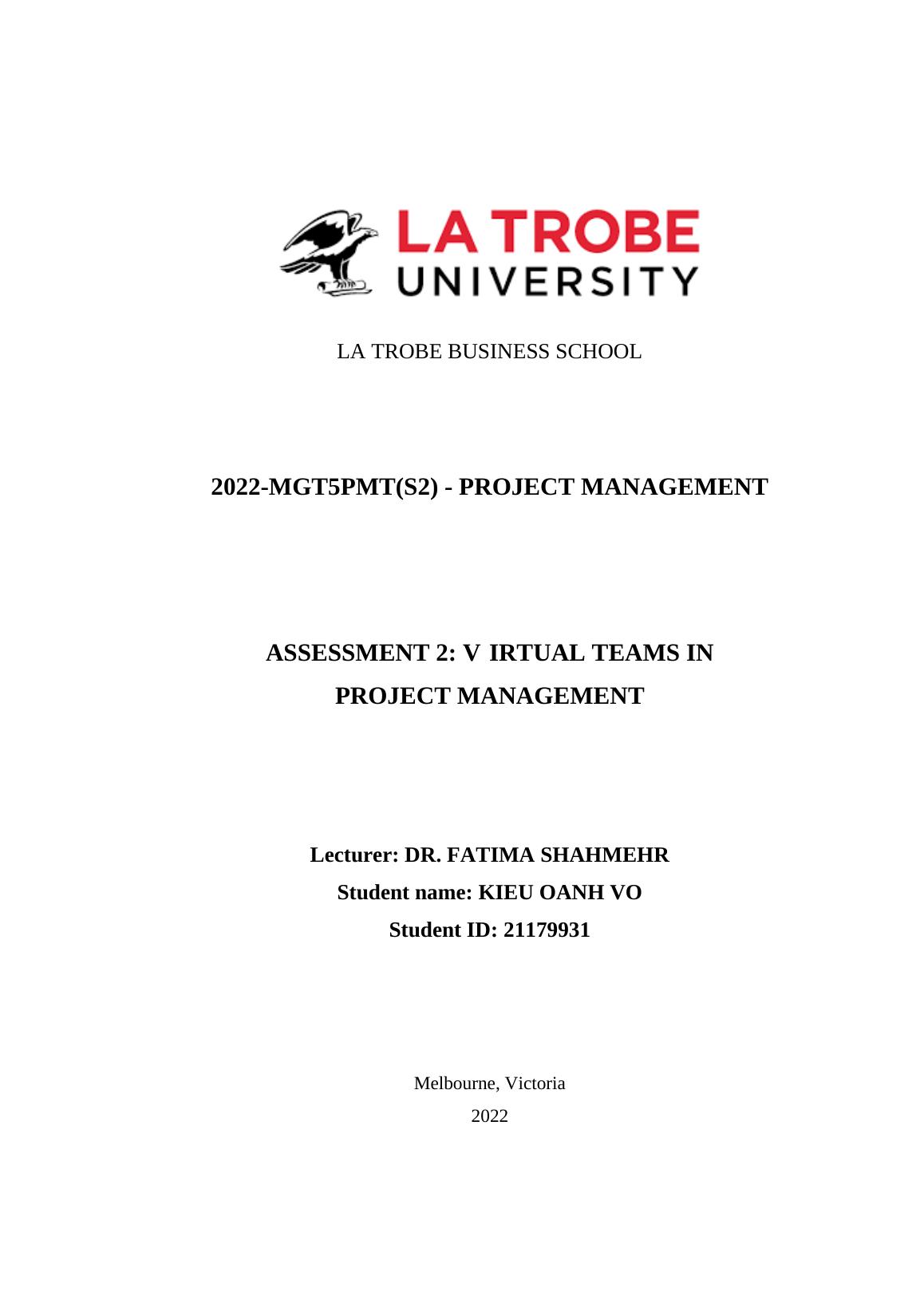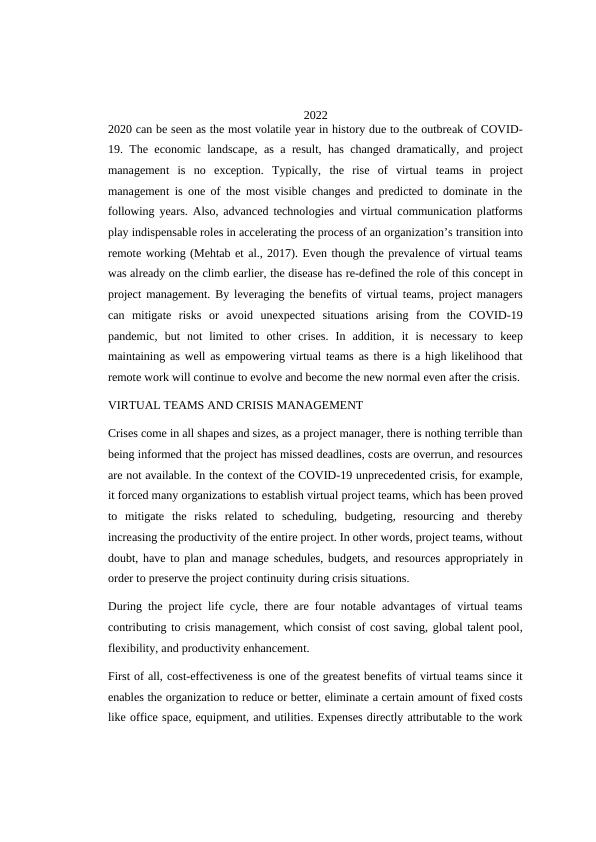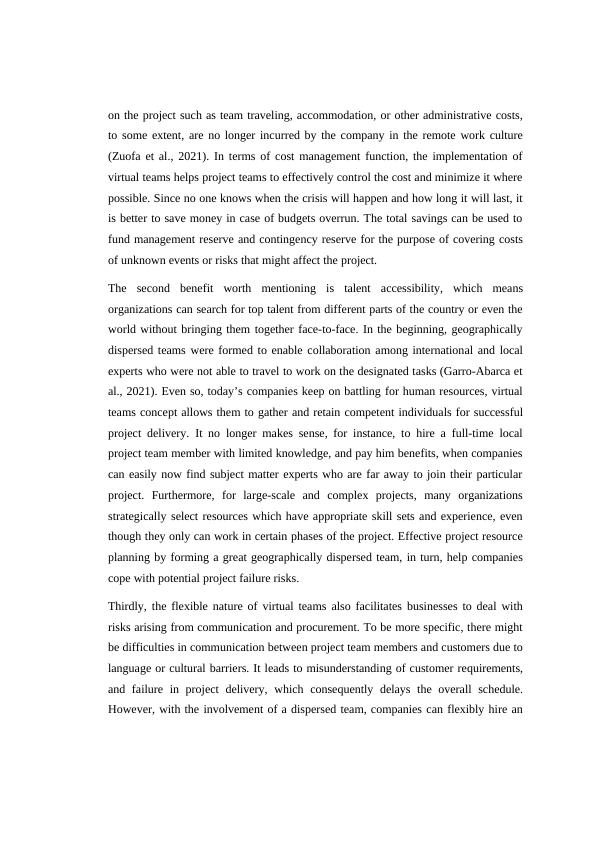Project management in the most volatile year of COVID-19
7 Pages2035 Words238 Views
Added on 2022-11-21
About This Document
The total savings directly attributable to the work on the project such as team traveling, accommodation, or other administrative costs, to some extent, are no longer incurred by the company in the remote work culture (Zuofa et al., 2021).
Project management in the most volatile year of COVID-19
Added on 2022-11-21
ShareRelated Documents
End of preview
Want to access all the pages? Upload your documents or become a member.
Benefits of Virtual Teams in Project Success and Risk Mitigation in Crisis
|7
|2016
|58
Risk Management : Robert Frank Company
|8
|1331
|12
Resource Planning and Management 1
|12
|1926
|226
Challenges and Strategies for Global Strategic Management: A Case Study of MD Solutions
|9
|2138
|209
Project Scheduling and Time Management
|10
|2492
|95
Risk Assessment Matrix
|19
|3729
|14



